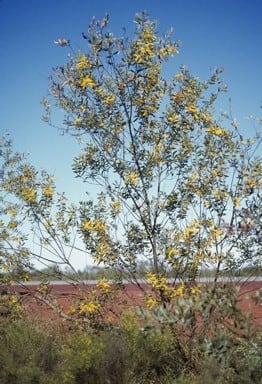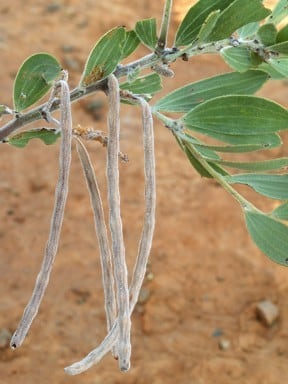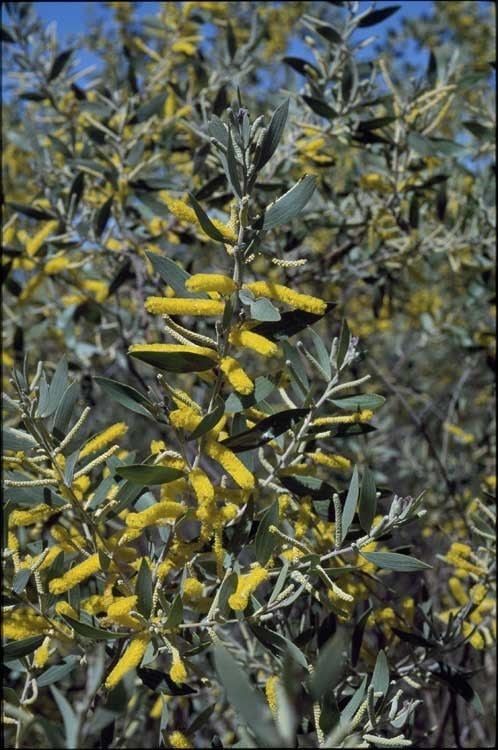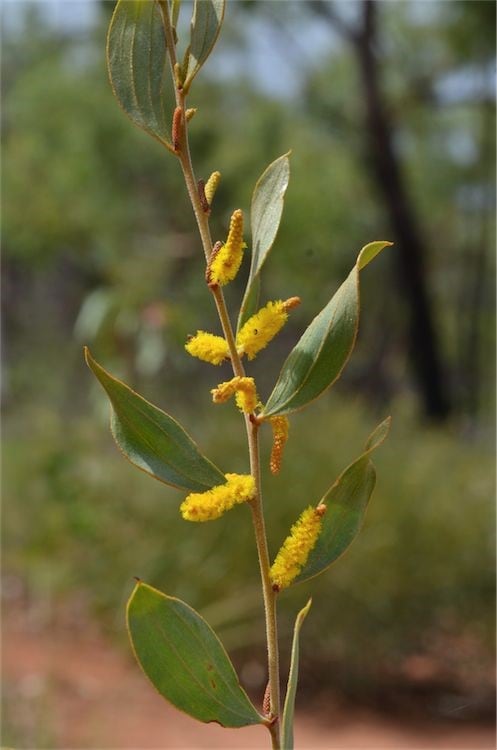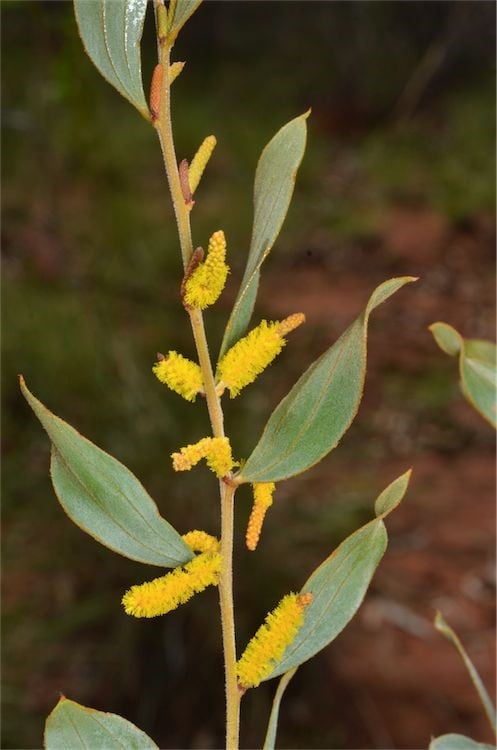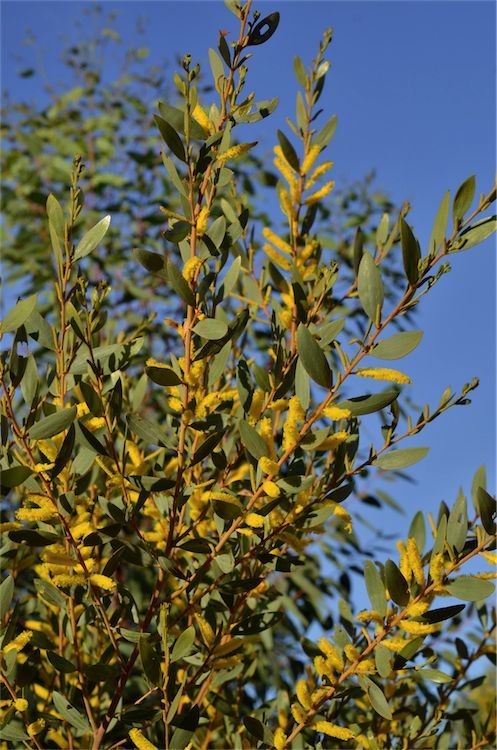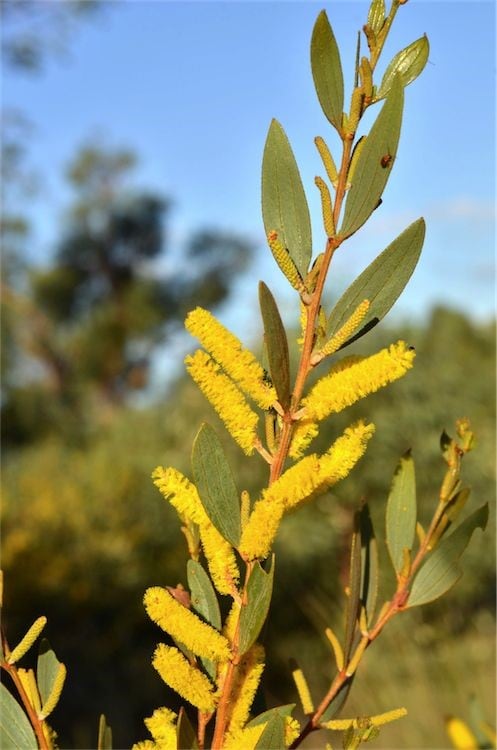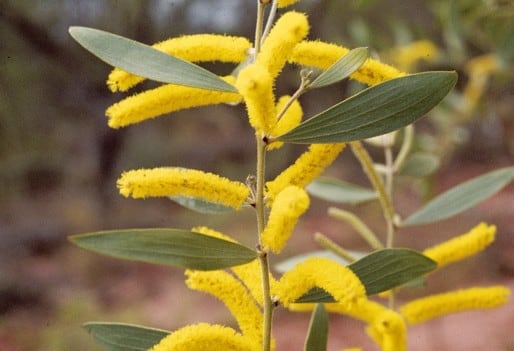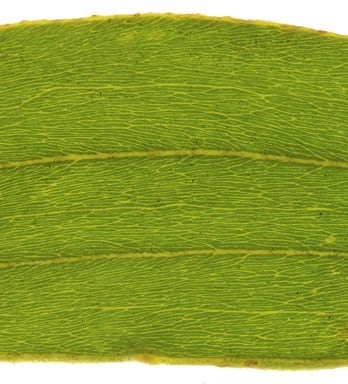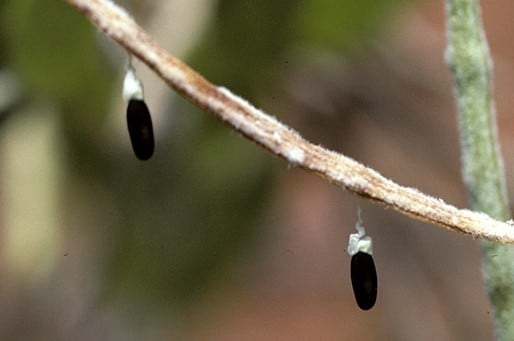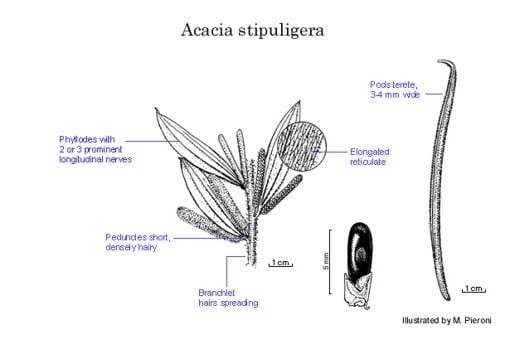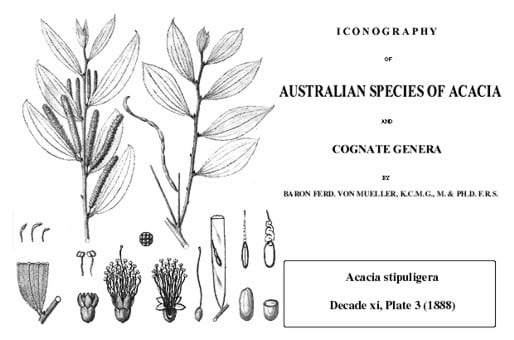Acacia stipuligera F.Muell.
WATTLE
Acacias of Australia
Common Name
Scrub Wattle, Kurapuka
Family
Fabaceae
Distribution
Widespread in tropical Australia, from the Great Sandy Desert, W.A., and the Tanami Desert, W.A. and N.T., extending into the northern central area of N.T. and the desert country on the Dividing Ra., Qld, between Jericho and Lake Buchanan.
Description
Shrub 2–6 m high, bushy, often multistemmed, rounded. Bark longitudinally fissured, with small flakes, light to dark grey. Branchlets terete, densely to sparsely puberulous. Stipules broadly triangular, c. 1 mm long, dark brown. Phyllodes narrowly elliptic, flat, straight or shallowly incurved, 3–9.5 cm long, (4–) 6–20 mm wide, with mucro to 1.5 mm long, ±coriaceous, ±glabrous to densely puberulous; main nerves 2 or 3, longitudinal, more prominent; minor nerves finely reticulate; glands 1–5, marginal, reniform-depressed. Peduncles 1–5 mm long, puberulous. Spikes paired in phyllode axils, 2–5 cm long, dense, bright yellow. Flowers 5-merous; calyx 0.8–1 mm long, dissected to 1/2, membranous, pubescent; corolla 1.2–1.5 mm long, slightly pubescent. Pods linear, ±subtorulose, straight to ±curved, 5.5–13.5 cm long, 3–4 mm wide, densely pubescent, later glabrous. Seeds longitudinal, narrowly oblong, 4.5–5.5 mm long, dark brown; areole 0.9–1 mm long.
Phenology
Flowers May–Aug., sometimes earlier, and older flowers retained other months.
Habitat
Grows in red sandy soils and loam in scrub or woodland, often with spinifex.
Specimens
W.A.: near Echidna Chasm, Bungle Bungle Mtns near Turkey Ck, M.Hancock 451 (NSW); 15 km S of campsite at Red Ck, 10 km ENE of Bungle Bungle Outcamp, K.F.Kenneally 9233 (NSW, PERTH). N.T.: Fergusson R., C.E.F.Allen 646 (NSW); 44.4 miles [71.5 km] SW [of] Hooker Ck Settlement, 15 Apr. 1959, G.Chippendale (DNA, NSW). Qld: between Emerald and Barcaldine, N.Hall H84/25 (NSW).
Notes
This is a variable species with a very wide geographical distribution. It is readily distinguished by the two prominent nerves running from the phyllode base to the apex with conspicuously reticulate, crowded nerves between, as well as the presence of 3–5 marginal glands. The number of glands is somewhat variable, even on the same plant, but is rarely less than three.
Acacia stipuligera var. glabrifolia has not been maintained as a separate taxon. The phyllodes of the holotype are slightly pubescent at the base. All the other Qld specimens cited here have ±glabrous phyllodes mostly with 2 prominent nerves. L.Pedley, Austrobaileya 2: 356 (1987), raised this variety to subspecific rank as Racosperma stipuligerum subsp. glabrifolium (Maiden & Blakely) Pedley without any discussion except that subsp. stipuligerum does not occur in Queensland. There are 2 W.A. collections of A. stipuligera with almost glabrous phyllodes, viz. ‘Rita Downs’, SW of Broome, F.Lullfitz L6221 (NSW, PERTH) and Thangoo Stn, F.Lullfitz L6132 (CANB, K, NSW, PERTH), which have relatively narrow phyllodes 4–7.5 mm wide with 2 or 3 prominent nerves. Other material from north-western W.A. has relatively pubescent phyllodes usually with 3 prominent nerves. The majority of N.T. specimens of A. stipuligera have fairly pubescent phyllodes mostly with 3 prominent nerves.
Details of ecology, utilisation, etc. of Acacia stipuligera are given by L.A.J.Thomson & N.Hall, CSIRO Div. Forestry & Forest Products Australian acacias Leaflet No. 26 (1989). Details of fire tolerance and Aboriginal use are given by P.Latz, Bushfires & Bushtucker 117 (1995).
L.Pedley, Austrobaileya 1: 170 (1978) suggests that A. stipuligera may be allied to A. acradenia, although the relationship is not close.
FOA Reference
Data derived from Flora of Australia Volumes 11A (2001), 11B (2001) and 12 (1998), products of ABRS, ©Commonwealth of Australia
Author
Dr M.D.Tindale and Dr P.G.Kodela with the assistance of M.Bedward, S.J.Davies, C.Herscovitch, D.A.Keith and/or D.A.Morrison
Minor edits by J.Rogers
This identification key and fact sheets are available as a mobile application:
URL: https://apps.lucidcentral.org/wattle/
© Copyright 2018. All rights reserved.
